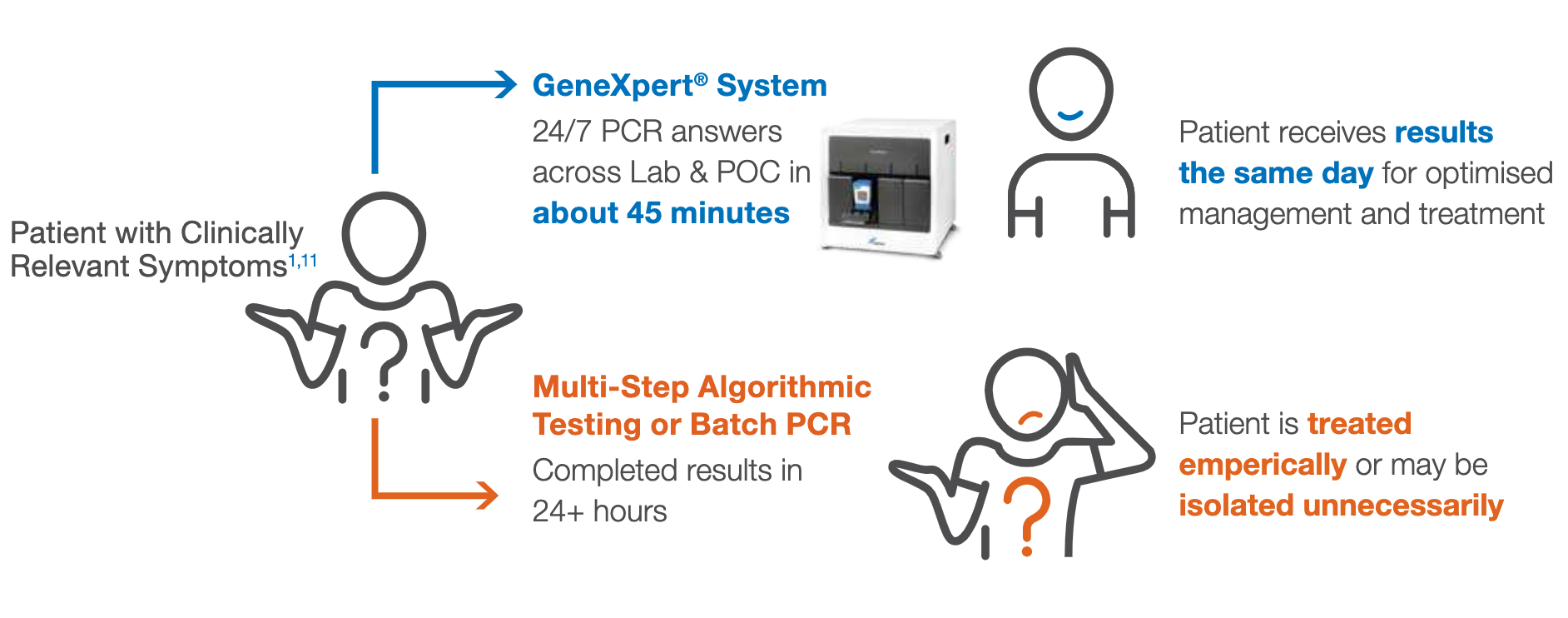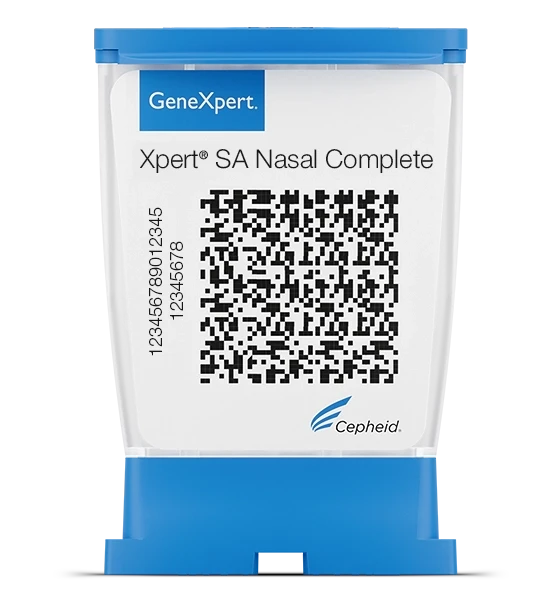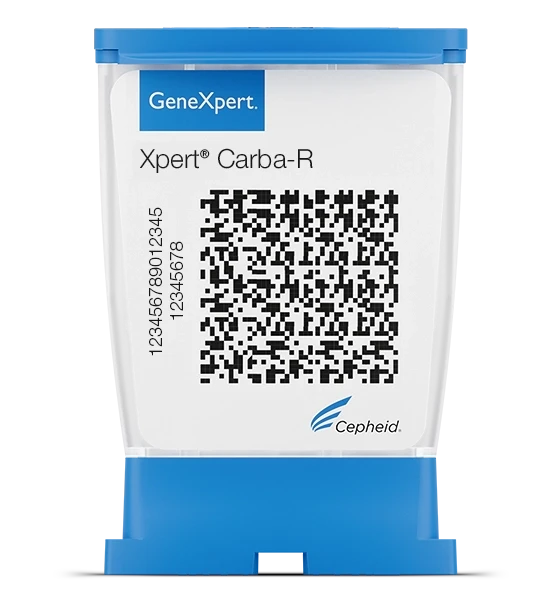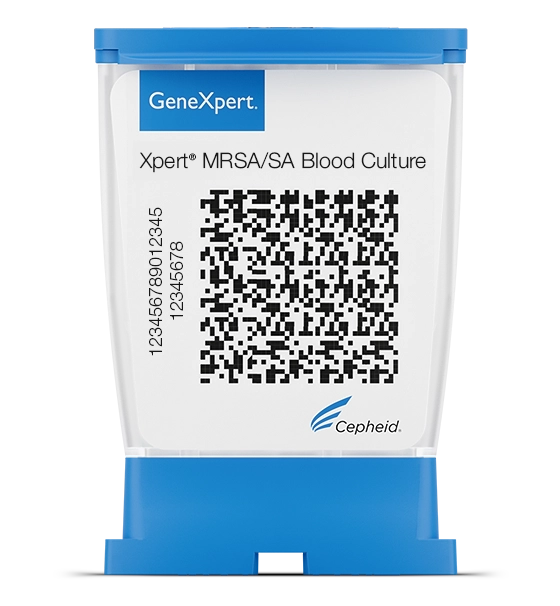
Xpert® C. difficile BT
Nachweis einer Clostridium-difficile-Infektion mit separater Markierung von binärem Toxin und Differenzierung des 027-Stamms in rund 45Minuten
Um Preise zu sehen, melden Sie sich an oder erstellen Sie ein MyCepheid-Konto.
Größe(n) der Testpackung

10 Tests
GXCDIFFBT-CE-10
Menge
Preis pro Einheit
Zwischensumme
USD
Das Produkt ist in Ihrer Region nicht erhältlich.
Probenentnahmeprodukte

Probenentnahmeprodukt (50er-Packung)
900-0370
Menge
Preis pro Einheit
Zwischensumme
USD
Das Produkt ist in Ihrer Region nicht erhältlich.

Einwegtupfer (120er Pack)
SDPS-120
Menge
Preis pro Einheit
Zwischensumme
USD
Das Produkt ist in Ihrer Region nicht erhältlich.
Insgesamt
{{currency}}
0
Fehler beim Hinzufügen von Artikeln zum Warenkorb. Wenn dieser Fehler weiterhin besteht, wenden Sie sich bitte an Digital Support.
Der Bedarf
C.-difficile-Infektionen (CDI) nehmen in Bezug auf Häufigkeit und Schwere immer weiter zu und resultieren in einem verlängerten Krankenhausaufenthalt, erhöhten Kosten und einer höheren Morbidität und Mortalität.2
- Hoch virulente (027-NAP1-BI)-Stämme waren die Ursache für Ausbrüche schwerer Erkrankungen in Europa und Nordamerika3
- Binäres Toxin (BT) kann aus folgenden Gründen von Bedeutung sein:
- Auswirkungen sowohl auf die Schwere als auch den Verlauf der Erkrankung4
- Stämme wie der 033-Stamm sind nur für binäres Toxin positiv und nicht für die Toxine A und B, können jedoch ebenfalls CDI hervorrufen5,6
(2) European Hospital and Healthcare Federation (HOPE). CDI Europe Report, 2013: Clostridium difficile infection in Europe. FDX/12/0082/EU. (3) Marujo V, et al. The largely unnoticed spread of Clostridioides difficile PCR ribotype 027 in Germany after 2010. IPIP. 2020 Dez;2(4):100102. (4) Stewart D, et al. Predicting recurrence of C. difficile colitis using bacterial virulence factors: binary toxin is the key. J Gastrointest Surg. 2013 Jan.;17(1):118–24. (5) Eckert C, et al. Prevalence and pathogenicity of binary toxin-positive C. difficile strains that do not produce toxins A and B. New Microbes New Infect. 2014 Nov;8(3):12–7. (6) Androga G, et al. Bewertung der Cepheid Xpert C. difficile/Epi- und Meridian Bioscience Illumigene C. difficile-Tests zum Nachweis von Clostridium difficile Ribotyp 033-Stämmen. J Clin Microbiol. Mär. 2015;53(3):973–5. (7) Tresman R & Goldenberg S. Healthcare resource use and attributable cost of Clostridium difficile infection: a micro-costing analysis comparing first and recurrent episodes. J Antimicrob Chemother. 2018 Oct;73(10):2851-2855.
Die Lösung
CDI sind zu einer erheblichen und steigenden Gefahr für Patienten im Krankenhaus geworden, sodass ein frühzeitiger und genauer Nachweis erforderlich ist.
Xpert®C. difficile BT bietet die Möglichkeit:
Xpert®C. difficile BT bietet die Möglichkeit:
- zum schnellen Nachweis toxinproduzierender C. difficile in rund 45 Minuten.
- breiten Abdeckung mit mehreren Zielsequenzen, einschließlich: Toxin B (tcdB), binärem Toxin (cdtA) und der tcdC-Deletion bei Base 117, die mit dem Ribotyp-027-Stamm, einem Prädiktor für schwere CDI und Mortalität, assoziiert ist.8
- optimierten und zeitnahen Therapieeinleitung für bessere Behandlungsergebnisse.9
- für rechtzeitige Maßnahmen zur Infektionskontrolle zur Eindämmung der Übertragung.10
- Effizienz im Labor mit minimaler Hands-on-Time und ohne Testwiederholungen dank eines bedarfsbasierten Workflows.1,11
(1) Casari E, et al. Reducing rates of Clostridium difficile infection by switching to a stand-alone NAAT with clear sampling criteria. Antimicrob Resist Infect Control. Mär. 2018;7(40). (8) Rao K, et al. C. difficile Ribotyp 027: relationship to age, detectability of toxins A or B in stool with rapid testing, severe infection, and mortality. Clin Infect Dis. 15. Jul. 2015;61(2):233–41. (9) Peppard W, et al. Implementation of polymerase chain reaction to rule out C. difficile infection is associated with reduced empiric antibiotic duration of therapy. Hosp Pharm. Jul. 2014;49(7):693–43. (10) Schroeder L, et al. Economic evaluation of laboratory testing strategies for hospital-associated Clostridium-difficile-Infektion. JCM. Feb. 2014;52(2):489. (11) Gemäß Anweisungen zur Probenahme von C. difficile, detailliert beschrieben in: McDonald L, et al. Clinical Practice Guidelines for Clostridium difficile Infection in Adults and Children: 2017 Update by the Infectious Diseases Society of America (IDSA) and Society for Healthcare Epidemiology of America (SHEA). Clin Infect Dis. Apr. 2018;66(7):e1–e48.CATALOG INFORMATION Xpert® C. difficile BT10 tests GXCDIFFBT-CE-10
Die Auswirkungen
Antworten nach Bedarf, überall und jederzeit zur Versorgung Ihrer Patienten












